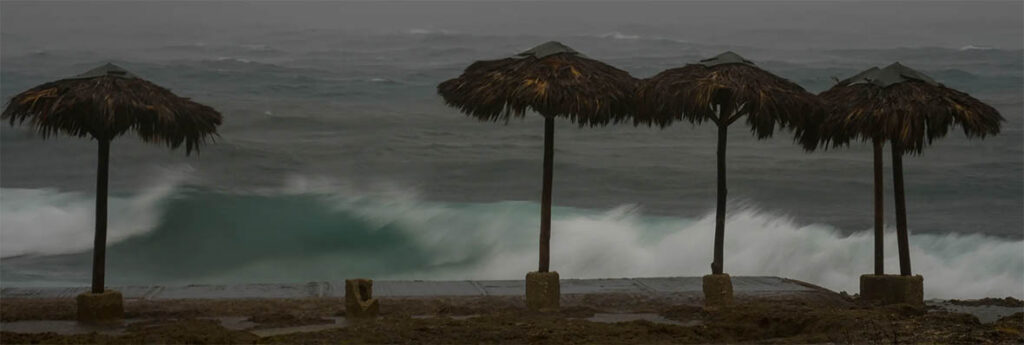Cuba was left reeling Thursday after a fierce Category 3 hurricane ripped across the island and knocked out the country’s power grid. The magnitude of the impact remained unclear through the early hours of the day, but forecasters warned that Hurricane Rafael could bring “life-threatening” storm surges, winds and flash floods to Cuba after ravaging parts of the Cayman Islands and Jamaica.
On Wednesday evening, huge waves lashed at Havana’s shores as sharp winds and rain whipped at the historic cityscape, leaving trees littered on flooded roads. Much of the city was dark and deserted.
As it plowed across Cuba, the storm slowed to a Category 2 hurricane chugging into the Gulf of Mexico near northern Mexico and southern Texas, according to the National Hurricane Center in Miami.
On Thursday morning, the hurricane was located about 180 miles (290 kilometers) west-northwest of Havana. It had maximum sustained winds of 105 mph (165 kph) and was moving northwest at 9 mph (15 kph).
Earlier in the week, Rafael brushed past Jamaica and battered the Cayman Islands, downing trees and power lines and unleashing heavy flooding in some areas.
Authorities in Jamaica are searching for a couple last seen inside a car that was swept away by floodwaters, police told Radio Jamaica Online.
Thousands of customers in Jamaica and Little Cayman remain without power as crews keep working to restore electricity after the storm. Local media reported that officials also were evacuating more than 100 tourists from Little Cayman, which was hardest hit.
Rafael is expected to keep weakening as it spins over open waters and heads toward northern Mexico, although the hurricane center warned there was “significant uncertainty” in the storm’s future track.
Meanwhile, many Cubans were left picking up the pieces from Wednesday night, with a strange sense of déjà vu after a rocky few weeks in the Caribbean nation.
In October, the island was hit by a one-two punch. First, Cuba was roiled by stretching island-wide blackouts stretching on for days, a product of the island’s energy crisis. Shortly after, it was slapped by another powerful hurricane that killed at least six people in the eastern part of the island.
It stoked discontent already simmering in Cuba amid an ongoing economic crisis, which has pushed many to migrate from Cuba.
While the State Department issued a travel warning for Cuba because of the story, the Cuban government also raised an alarm, asking citizens to hunker down.
Classes and public transport were suspended on parts of the island and authorities canceled flights in and out of Havana and Varadero. Thousands of people in the west of the island were evacuated as a preventative measure, and many more like Silvia Pérez, a 72-year-old retiree living in a coastal area of Havana, scrambled to prepare.
“This is a night I don’t want to sleep through, between the battering air and the trees,” Pérez said. “I’m scared for my friends and family.”
The concern came after the storm knocked out power in the Cayman Islands and Jamaica, where it also unleased flooding and landslides.
Rafael is the 17th named storm of the season.
The National Oceanic and Atmospheric Administration predicted the 2024 hurricane season was likely to be well above average, with between 17 and 25 named storms. The forecast called for as many as 13 hurricanes and four major hurricanes.
An average Atlantic hurricane season produces 14 named storms, seven of them hurricanes and three major hurricanes.

